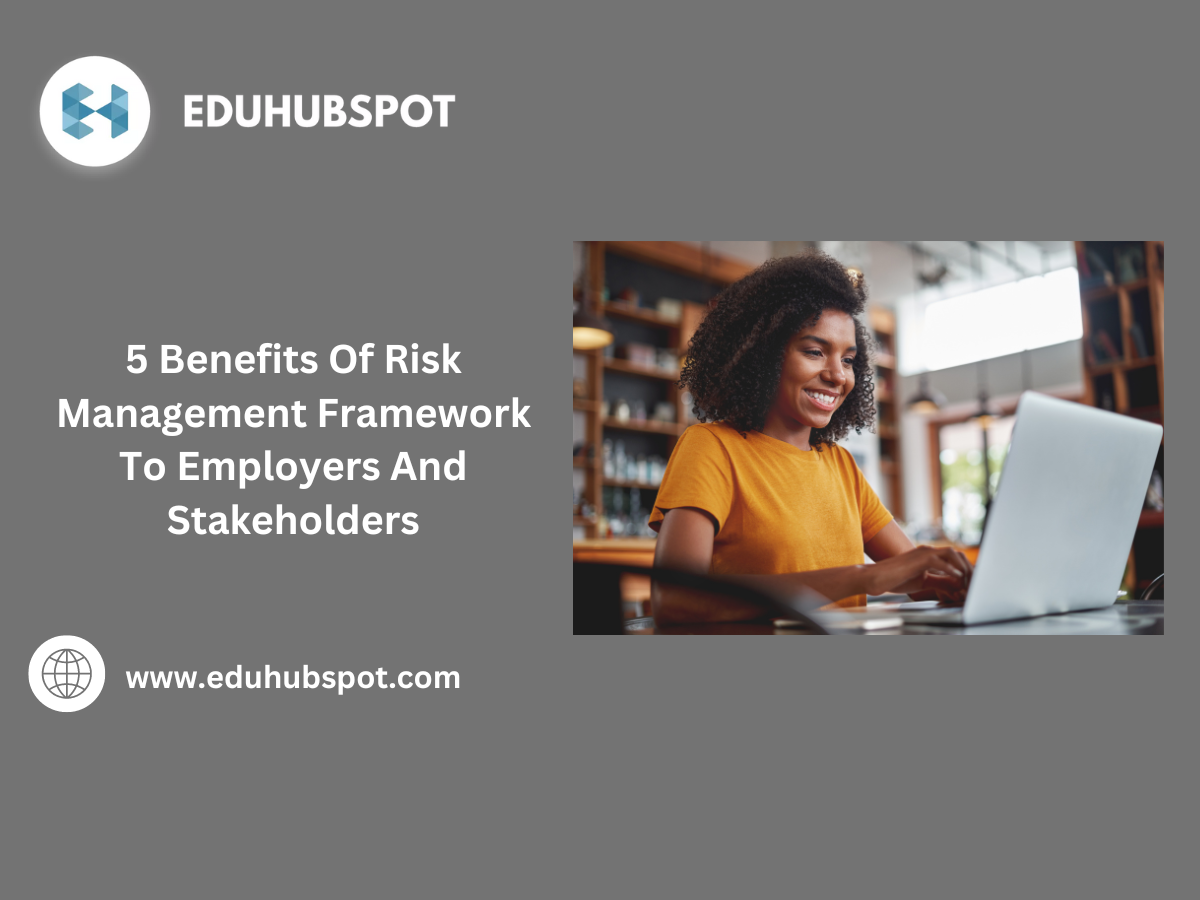5 Benefits Of Risk Management Framework To Employers And Stakeholders

Introduction
Risk management framework is a systematic approach to identifying, assessing, and prioritizing potential risks that an organization faces. It helps organizations to mitigate, monitor, and manage the impact of these risks on their operations, reputation, and overall success.
In today’s rapidly changing business environment, organisations face a wide range of risks, from economic and political uncertainty to technological and operational disruptions. A risk management framework provides a structured approach to help organisations identify, assess, and respond to these risks, so that they can protect their assets, reputation, and future success.
Benefits of a Risk Management Framework for Stakeholders
Benefits of a Risk Management Framework to Employers
Improved Decision Making
A risk management framework helps employers to make informed decisions by providing a structured approach to identifying, assessing, and prioritising potential risks. This allows employers to weigh the potential consequences of different courses of action and make decisions that are based on a thorough understanding of the risks involved.
Better Resource Allocation
By identifying and prioritising risks, a risk management framework can help employers to allocate their resources more effectively. This means that they can focus on the risks that are most likely to impact their operations, reputation, and overall success, and allocate their resources accordingly.
Increased Profitability and Productivity
By mitigating and managing risks, a risk management framework can help employers to improve their profitability and productivity. This is because they are better equipped to deal with unexpected events and disruptions, which can cause significant financial losses and operational disruptions.
Enhanced Reputation and Brand Image
A risk management framework helps employers to build trust and credibility with their stakeholders, including customers, employees, and investors. By demonstrating a commitment to risk management and transparency, employers can enhance their reputation and brand image, which can drive long-term success and growth.
Benefits of a Risk Management Framework to Stakeholders
Improved Transparency and Trust
A risk management framework provides stakeholders with greater visibility into the risks that an organisation faces and the steps that it is taking to mitigate those risks. This improved transparency can help to build trust and confidence in the organisation, which is critical for establishing strong and enduring relationships with stakeholders.
Enhanced Compliance and Legal Protection
A risk management framework helps organisations to comply with relevant laws, regulations, and industry standards. This can help to reduce the risk of legal and financial penalties, and protect stakeholders from the consequences of non-compliance.
Better Allocation of Capital and Resources
By providing a structured approach to identifying, assessing, and prioritising risks, a risk management framework can help organisations to allocate their capital and resources more effectively. This means that stakeholders can have confidence in the decisions that the organisation makes and be more willing to invest in its future success.
Improved Relationship between Stakeholders
A risk management framework can help to improve relationships between stakeholders by fostering greater transparency, trust, and understanding. This can lead to improved communication and collaboration, which is essential for building strong and productive relationships that support long-term success and growth.
Conclusion
A risk management framework provides a range of benefits for both employers and stakeholders, including improved decision making, better resource allocation, increased profitability and productivity, enhanced reputation and brand image, improved transparency and trust, enhanced compliance and legal protection, better allocation of capital and resources, and improved relationships between stakeholders.
A risk management framework is a critical tool for organisations that are looking to navigate the complex and rapidly changing business environment. We here at PMI-RMP bootcamp of EDUHUBSPOT providing a structured approach to identifying, assessing, and responding to risks, a risk management framework can help organisations to protect their assets, reputation, and future success, and establish strong and productive relationships with their stakeholders.
A risk management framework provides numerous benefits for both employers and stakeholders, including improved decision-making, better resource allocation, increased profitability and productivity, enhanced reputation and brand image, improved transparency and trust, enhanced compliance and legal protection, better allocation of capital and resources, and improved relationships between stakeholders. Get a comprehensive understanding of the power of a risk management framework.
Author: Axiswebart team has 5+ years of experience in writing content on Project Management topics and along with different publications. Also, they are delivering good write-ups on various other projects too.









